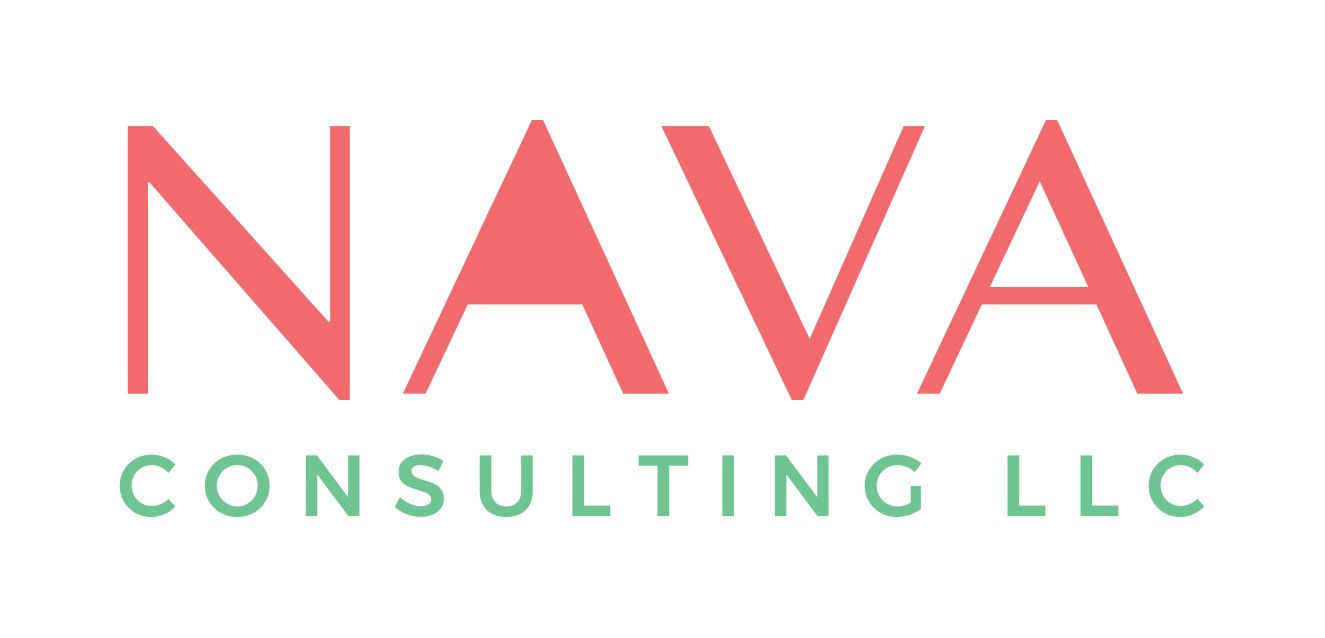Authors: Dr. Mayra Austin and Danielle Nava-Mijares, MAOL
Thank you for reading our article. Here at Management Cues, we regularly write about management trends.
Beyond the Buzz: Making Management Equity a Reality in the Workplace
Today, concepts like Diversity, Equity, and Inclusion (DEI) are integral to discussions around leadership, management, organizational development, workplace culture, and organizational success. While diversity speaks to the presence of differences, equity ensures fair treatment, access, opportunity, and advancement for all individuals. Inclusion fosters a sense of belonging by valuing and respecting, and intentionally making space for these differences.
In our experience and observations at Management Cues, managers and leaders often miss those distinctions in the workplace and are not prepared to address or act on them in their day-to-day interactions.
U.S. workplace demographics and the level of cultural competency across organizations speaks clearly to a fervent need for education and training around cultural beings.
According to Zippia, The Career Expert, there are over 1,920,990 managers currently in the U.S. workforce. In The U.S. Bureau of Labor highlights on labor statistics for 2023, there is a significant lack of representation within management roles and related occupations, which is crucial for driving effective DEI initiatives.
Achieving true workforce equity, particularly in the management space, remains a challenge for many organizations and hence so does identifying their potential capacity to lead. Central to overcoming this challenge is a heightened absence of awareness of the issues and a committed effort to address them.
Increased DEI awareness and knowledge around management and leadership practices includes, but is not limited to these five best practices:
Face the facts: Acknowledge the long-term damage of outdated, biased policies and practices. It’s a humbling task, and outside support might be necessary.
Create brave spaces: Encourage open dialogue with a diverse group of employees to examine outdated practices for hidden biases and exclusion.
Prioritize fixes: Commit to addressing both short-term and long-term solutions—no more waiting.
Seek feedback, take action: Don’t shy away from feedback, even if it feels overwhelming. Share findings, make actionable changes, and involve the entire organization.
Communicate transparently: Share both wins and setbacks openly. Build a sense of “we” rather than “us vs. them.”
It is important to these efforts that DEI work should not be seen as one department’s responsibility or work that is built solely on the shoulders of the BIPOC (Black, Indigenous, and People of Color) individuals or leaders of color in an organization.
In our experience, many organizations treat DEI as a checkbox exercise, opting for the easiest wins or avoiding it altogether because it feels "too difficult." Managers bare the impact of this approach through a trickle down effect and ultimately experience gaps in handling that easily result in legal and business risk.
Quick change is often sought to soften the discomfort the awareness brings. Managers are cautioned often times by leaders, to not quantify equity work in the same way one might with other business outcomes.
Productive discomfort is necessary to move these efforts forward and create intentional climate and culture change.
When we, as decision makers, enter this work, we need to commit to it for the long and messy haul. Otherwise efforts may be experienced as performative both by internal and external clients. The old adage of “when the tough gets going, the going gets tough” rings true in this case. When emotions arise, leaders might become fearful and try to “make nice” and table conversations so that things can calm down. Instead of calm however, festering and resentment can develop in those around us, employee satisfaction can decline, and a breakdown of culture and climate can occur.
When it gets tough, this is often indicative that the real issues are being revealed and repair and communication can begin.
Organizations don’t become equitable overnight or because they say they are; or because they read a couple of books on the topic; or even because in earlier efforts, leaders have diversified the employee demographics.
Operational and organizational excellences takes leaders making informed intentional decisions and managers understanding what complimentary and effective tactics should follow.
As leaders, we aren’t counting widgets here! We aren’t completing a puzzle that needs one piece to fit in a designated spot. We are talking about correcting systemic inequity stemming from hundreds of years of segregation, segmentation, and underrepresentation that shows up in daily interactions and experiences for our managers and our teams.
People are complex and multidimensional…and so is the work of DEI.
Understanding Workforce Equity
Workforce equity can require different things from different businesses depending on their disposition. In the management space, this involves ensuring that leadership roles are accessible to all, regardless of race, gender, ethnicity, abilities, or other characteristics. It also means creating an environment where all employees feel valued and supported to reach their full potential.
The Current State of Management Equity
Many organizations still struggle to achieve true equity in management, with leadership often less diverse than the broader workforce. Women, people of color, and other historically marginalized groups remain underrepresented in executive roles due to implicit bias, limited mentorship, and systemic barriers. Positively, two-thirds of companies now include both company-specific demographics and EEOC categories in their reports, according to the Harvard Law School Forum on Corporate Governance. However, while recruitment may be more inclusive, fostering an inclusive organizational culture requires intentional effort and effective tactical execution. Without cultural shifts, effective training, and support for diversity, retention remains a challenge.
Advancing DEI Efforts
Awareness is the first step in realizing that diversity isn’t just about numbers—it’s about people and their experiences. True progress requires going beyond awareness to understanding issues that may not directly impact us.
For us to move the needle toward creating a more equitable management landscape creating opportunities for both increased knowledge and skill-building is key.
Here’s why:
1. Identifying Barriers:
Awareness and knowledge helps organizations identify the barriers that prevent equitable participation in management or leadership. This could include recognizing unconscious biases in hiring and promotion practices or understanding how corporate policies might inadvertently favor certain groups over others. This awareness comes from necessary discovery work which usually and unfortunately stems from employee grievances. Enlisting an outside professional to support, guide or consult may be useful for objective, experienced support. A leader’s self awareness is one of the first barriers to check for.
2. Cultivating An Inclusive Culture and Climate:
When managers and leaders become more aware of the important value the work of DEI is, they are more likely to create opportunities to foster an inclusive culture. This involves supporting and co-creating a workplace where all voices are heard and valued, and where diverse perspectives are seen as a strength rather than a challenge. In this case, managers need to be able to do their own work on checking for personal implicit bias, challenging their own schemas, and altering their own practices.
3. Assess and Drive Positive Policy Changes:
Awareness can lead managers to support leadership develop a new lens when evaluating policies. This can drive policy changes that promote equitable practices and increase accessibility. For example, an organization that recognizes a gender disparity in its management or leadership might implement mentorship programs specifically aimed at developing female talent or review its parental leave policies to support work-life balance better.
4. Enhancing Recruitment and Retention:
Addressing issues and being aware of the below the surface issues can improve recruitment and retention strategies. Organizations that prioritize equity are more attractive to top talent, particularly among younger generations who value social responsibility and inclusivity in their employers.
Strategies to Increase Awareness
To increase awareness of workforce equity issues, organizations can implement several strategies:
1. Education and Professional Development Training:
Invest and implement effective and ongoing DEI management training programs that guide managers and leaders through their own journey and relationship with equity and inclusion. Training and development cannot be a “one and done”. These on-going programs can include workshops, role-playing exercises, discussions on relevant laws and upcoming legislation, and how these elements relate to their personal success in their roles. Link training back to areas the management is responsible for and are quantified like productivity, output, team building, innovation, and turnover.
2. Data Collection and Analysis:
Collect and analyze data on employee demographics, hiring, exits, promotions, terminations and pay equity. Combine this critical information with performance metrics. This isn't solely an HR responsibility—managers are the owners of these outcomes. By leveraging this data, you can identify disparities, track progress over time, and enhance overall profitability. DEI work is known to increase productivity and better outcomes including employee morale. It’s imperative to recognize that the work must be people centered.
3. Employee Resource Groups (ERGs):
Offer support in the formation of ERGs. These groups provide a safe place for underrepresented groups to voice their concerns and offer recommendations for improving equity within the organization. Naming and addressing concerns is proactive and having space to develop and offer solutions to support the wellness of the organization’s functions is empowering. When employees have the chance to create and support positive change, their buy-in increases in all areas.
4. Leadership Commitment:
Ensure that senior leaders and decision makers receive training and are able to process their own relationship with principles of DEI. Leadership across the organization must be visibly committed to DEI initiatives and have true buy-in. Without support, training and coaching, leaders may feel resentful, angry and forced. To avoid this reaction, normalizing uncomfortable conversations is central to the success of this work. Additionally, tasks like setting specific goals around culture and climate , regularly communicating about organizational DEI efforts, and creating opportunities to talk about tangible outcomes as a team is valuable and lends itself to develop non performative strategies.
Mastering Communication Training Bundle
Conclusion
Achieving workforce equity in management is an ongoing, intentional commitment rather than a one-time effort. By fostering awareness, knowledge, developing culturally responsive tools and strategies, and skill-building, we can create intentional practices and ways of being that eliminate barriers to equity. Developing and implementing strategies to address these barriers enables organizations to create a more inclusive and fair workplace for all employees. This approach can lead to better performance results, increased innovation, enhanced creativity, and higher internal customer satisfaction, ultimately cultivating a more engaged, inclusive, and productive workforce.
Through Management Cues and our partners, like NAVA Consulting, we help ensure that embracing DEI is not merely about meeting moral compliance or ethical obligations. It's about harnessing the full potential of a diverse workforce to achieve greater organizational success without fear of making mistakes.
As awareness grows, so too will the opportunities for creating a truly equitable management space and maximizing the potential in your environment.
You can learn more about DEI management and our training programs by utilizing tools like our management planner and other Management Cues resources that will help managers succeed. Management resources and training are available www.managementcues.org.
https://www.linkedin.com/pulse/closing-leadership-gap-achieving-true-equity-management-rqbsc/?trackingId=0RrOQY6eSYeSdr4xUwQebA%3D%3D



